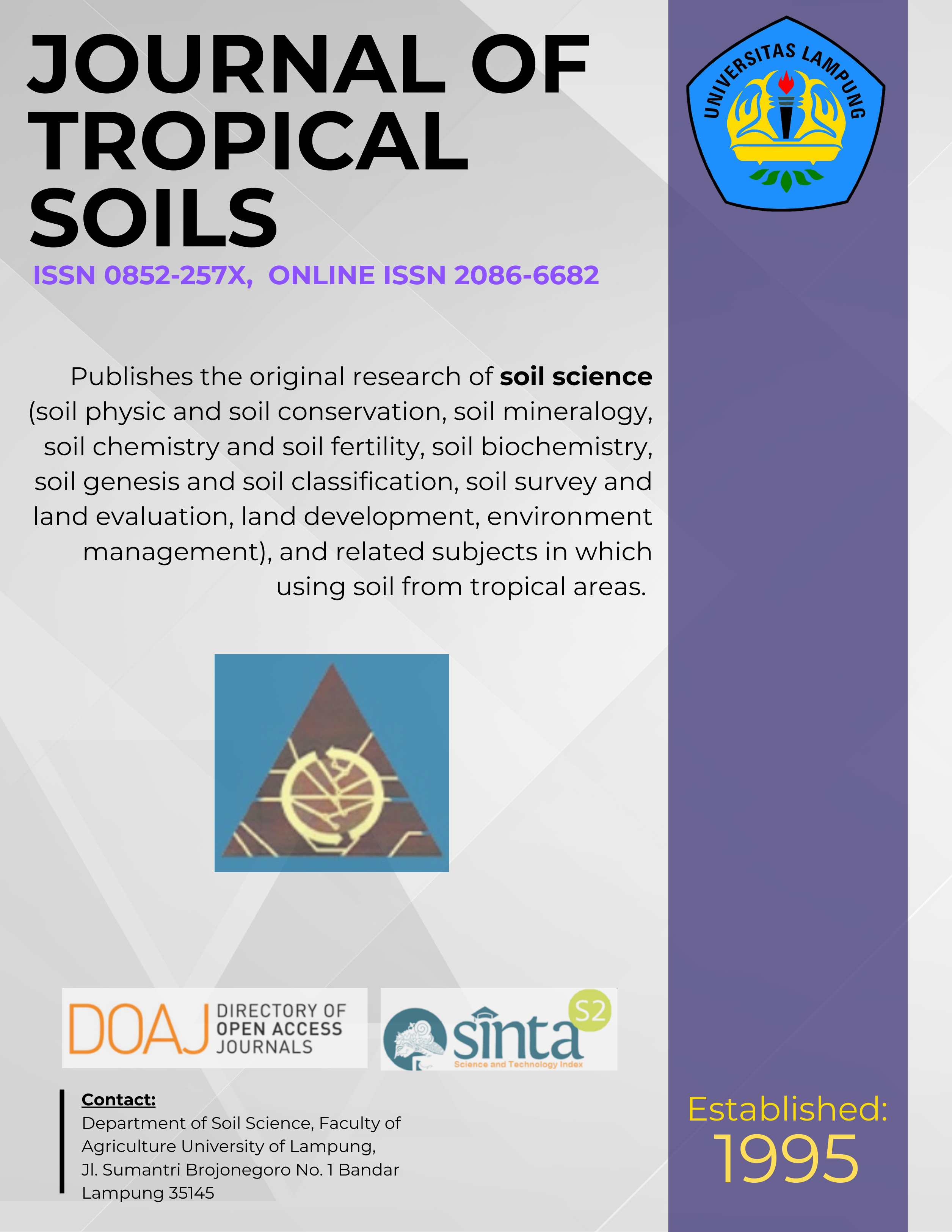The Long-Term Effect of Blanket Phosphorus Fertilizer Application on the Available P Content in Sawah Soils; Comparative Study in Java, Indonesia
Main Article Content
Abstract
In order to evaluate the effects of long-term phosphorus fertilizer application on the sawah soils, a comparative study was conducted in Java Island as a pioneer of Green Revolution (GR) technology application in Indonesia. Soil samples taken in 1970 by Kawaguchi and Kyuma were compared with new sample taken from the same site or the sites close to 1970 in 2003. The results showed that available phosphorus (P) sharply increased during the study period. The average content of available P in topsoil layer changed from 10.5±11.6 mg kg-1 P in 1970 to 19.6±22.4 mg kg-1 P in 2003, or increased by 118%. Long-term application of 125 kg super-phosphate [Ca(H2PO4)2] per hectares per cropping season as P fertilizers was also affected the profile distribution of available P in whole sites studied, especially in Vertisols. The land management differences between seedfarms planted with rice in monoculture systems whole study period and non-seedfarms cultivated rice and upland crops in some rotation patterns found affected the changing rate of available P in the soils. During the period of 1970-2003, average content of available P in seedfarms changed from 15.7±16.2 mg kg-1 P to 31.1±29.1 mg kg-1 P, while in non-seedfarm from 6.9±8.7 mg kg-1 P to 11.5±8.2 mg kg-1 P in 1970 and 2003, respectively. The great variation on the changing rate of available P observed in this study indicated that general chemical fertilizers recommendation in Indonesia was caused excess P input in some sites, but insufficient in others. To avoid the adverse effect of P fertilizer application in the future, recommendation of P should be based on the site characteristic and taking into account of natural resources contribution.
Downloads
Article Details
Section
License for Authors
Authors who publish with this journal agree to the following terms:
- Authors retain copyright and grant the journal right of first publication with the work simultaneously licensed under a Creative Commons Attribution License that allows others to share the work with an acknowledgement of the work's authorship and initial publication in this journal.
- Authors are able to enter into separate, additional contractual arrangements for the non-exclusive distribution of the journal's published version of the work (e.g., post it to an institutional repository or publish it in a book), with an acknowledgement of its initial publication in this journal.
- Authors are permitted and encouraged to post their work online (e.g., in institutional repositories or on their website) prior to and during the submission process, as it can lead to productive exchanges, as well as earlier and greater citation of published work (See The Effect of Open Access).
License for Regular Users
Other regular users who want to cite, distribute, remix, tweak, and build upon author’s works, even for commercial purposes, should acknowledge the work’s authorship and initial publication in this journal, licensed under a Creative Commons Attribution License.

